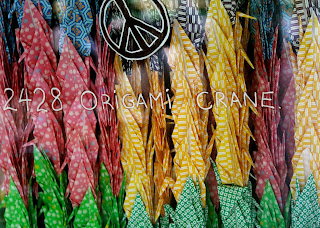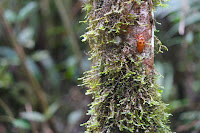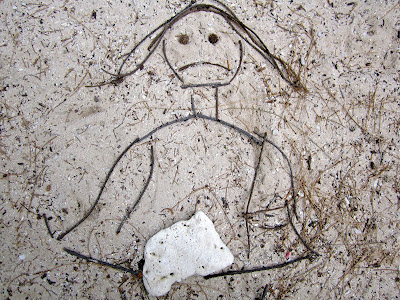POWs - RANAU
 We went to the Ranau Memorial for the Australian, New Zealand and British POWS who perished in the camps and on the “death march” between Sandakan and Ranau. 99.7% of the Aussie POWs died - only 7 survived. We’re walking about 5 hours of the trek tomorrow, but we will have hiking boots, full stomachs, sun screen, insect repellent, sun glasses, and we won’t have scabies, lice, malaria or malnutrition.
We went to the Ranau Memorial for the Australian, New Zealand and British POWS who perished in the camps and on the “death march” between Sandakan and Ranau. 99.7% of the Aussie POWs died - only 7 survived. We’re walking about 5 hours of the trek tomorrow, but we will have hiking boots, full stomachs, sun screen, insect repellent, sun glasses, and we won’t have scabies, lice, malaria or malnutrition.
There were also some amazing paintings depicting the hardship of the POWs.
When Singapore fell to the Japanese, all the Australians, NZ, British and Indian soldiers were captured and put in Changi prison.
The Japanese wanted to build a system to transport supplies easily through Asia, for example, they wanted a railway to Burma and an airfield in Borneo. I’ve been the Kanchanaburi near the River Kwai and saw Hellfire pass where the Aussies were sent from Changi to work 24 hours a day in terrible condition to built the Thai Burma railway.
 We saw a video today, and it talked about how Australians know about that railway and the Kokoda trail, but not many know about the atrocities in North Borneo - at Sandakan. The POWs sent to North Borneo from Changi went to build a runway at Sandakan. It didn’t happen in the end, because both the Australians and the local Sabahans sabotaged a lot of the construction.
We saw a video today, and it talked about how Australians know about that railway and the Kokoda trail, but not many know about the atrocities in North Borneo - at Sandakan. The POWs sent to North Borneo from Changi went to build a runway at Sandakan. It didn’t happen in the end, because both the Australians and the local Sabahans sabotaged a lot of the construction. 
The Japanese were very very cruel to the POWS. They tortured them horribly, and didn’t given them enough food & water, shelter or clothing. These are basic needs. The Japanese army were inhumane. They were especially cruel when they knew they were losing the war and would have to surrender soon. The instruction from the top Japanese generals was for the POWs to die - and most did, over 2000.

The Australian memorial garden is beautiful, and the museum has lots of framed photos and messages from families of the POWs.
There was one item that was special I thought. A big rectangular glass box with 2428 origami paper cranes and a message saying it was donated by the Ho Nishigori family, Tokyo 2011. I know what paper cranes mean in Asia:)
Mum’s reading a book by one of the Sandakan camp survivors, Billy Young and she’s been telling me bits about it. I signed the Visitors book.























































